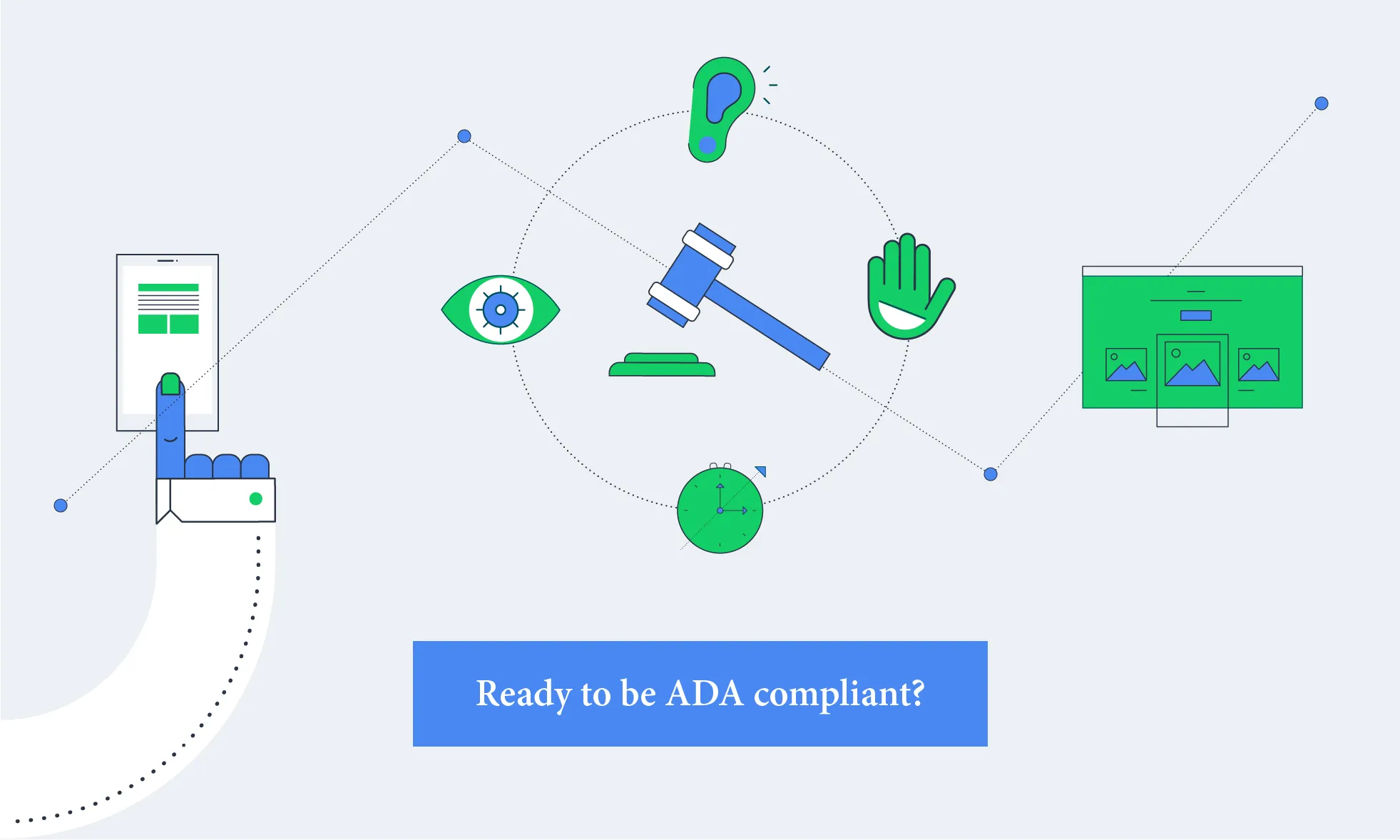Why this unique lawsuit will bring more ADA-compliant websites
Chances are, you’re reading this blog without the assistance of a screen reader. Just over two percent of the United States’ population has a visual disability, necessitating the use of this software that audibly translates a digital text. Two percent might not seem like a big number until you realize it equates to just under 7.4 million people. Or, until you realize that the number doesn’t account for all the people who have hearing or other disabilities that impact their ability to navigate your website. According to the Pew Research Center, nearly 40 million Americans were living with a disability in 2015. And that was 3 years ago! That’s a lot of customers you’re missing out on, and, likely, a lot of lives you’re unknowingly complicating.
It’s time to get in the know.
To help ensure all Americans have fair and equal access to programs, services and activities, the Americans with Disabilities Act (ADA) established in 1990 that government agencies, businesses and nonprofit services make onsite accommodations for the disabled. These accommodations (somewhat) expanded to the digital world in 2010 with an update to the act called ADA Standards for Accessible Design.
The regulations confront issues that, literally, billions of internet users take for granted. Issues like:
- Seeing images without text equivalents
- Reading documents not posted in screen-reader-accessible format (i.e., not PDFs)
- Seeing specific colors or font sizes
- Hearing audio and videos
Why do ADA compliant websites matter to me?
Recently, clear rules have been established (January 2018), but are still leaving businesses confused about how, when and if they need to update their commercial websites. What physical and mental disabilities require accommodation? Do mobile apps count? Are the rules the same for small businesses as they are Fortune 500 companies? We’ve detailed out the process in our blog, Steps to Ensure Your Website ADA Complaint.
This matters to you because in 2017, a Florida Federal District Court Judge found grocery chain Winn-Dixie in violation of Title III of the ADA by having a website not useable by plaintiff Juan Carlos Gil. Among 70 other businesses that were sued by Gil, Winn-Dixie was specifically cited for their site’s inability to allow visually impaired users to download coupons, order prescriptions and find store locations.
While companies have been sued for such oversight in the past, this ruling is the first of its kind. Winn-Dixie was forced to pay the attorney’s fees and costs, along with $250,000 to make their website ADA compliant. A quarter of a million dollars might not be a lot of large retailers, but this chunk of change could be debilitating to a small or midsize business.
And these lawsuits aren’t going away anytime soon. In fact, more than 26,000 new claims are filed each year. It’s time to implement changes to your website, before it’s too late.
Who is affected?
Most notably, state and local government websites are impacted by the ADA. This expands to government agencies like:
- Employment
- Transportation
- Education
- Health Care
- Labor
- Housing
- Parks and Recreation
- Agriculture
Outside of government, this also applies to private employers with 15 or more employees and businesses operating for the benefit of the public and non-profits (more specifically, “public accommodations and commercial facilities” that are covered under Title III).
Now that clear(er) rules have been implemented, the best option is to play it safe. There are plenty of free evaluation tools on the internet that can help ensure your properties are ADA compliant.
Digital marketing agencies arguably have the most knowledge about how to best navigate current regulations. They design customer-facing websites every day and can help your business determine what level of compliance you want to achieve. Investing in an experienced, knowledgeable partner can help you get your site in a place that helps avoid putting your business at risk.
So, if you’re in the market for a new, compliant site or just want to talk about what this means for your business, drop us a line.
You can also learn more about becoming compliant through our blog, ADA Compliance for Websites: Why It’s Important and What You Need to Know.
Updated: Mar 01, 2023
 Bonnie Winter
Bonnie Winter
 Kati Terzinski
Kati Terzinski Erin Murray
Erin Murray